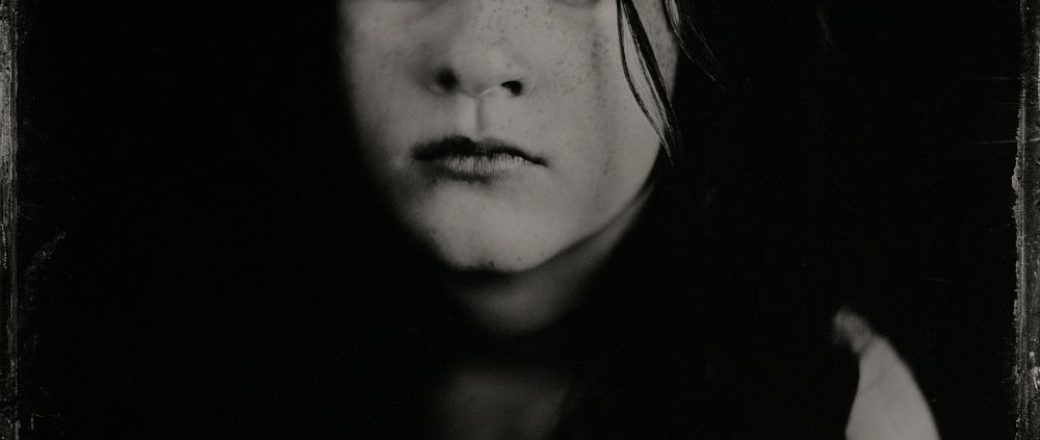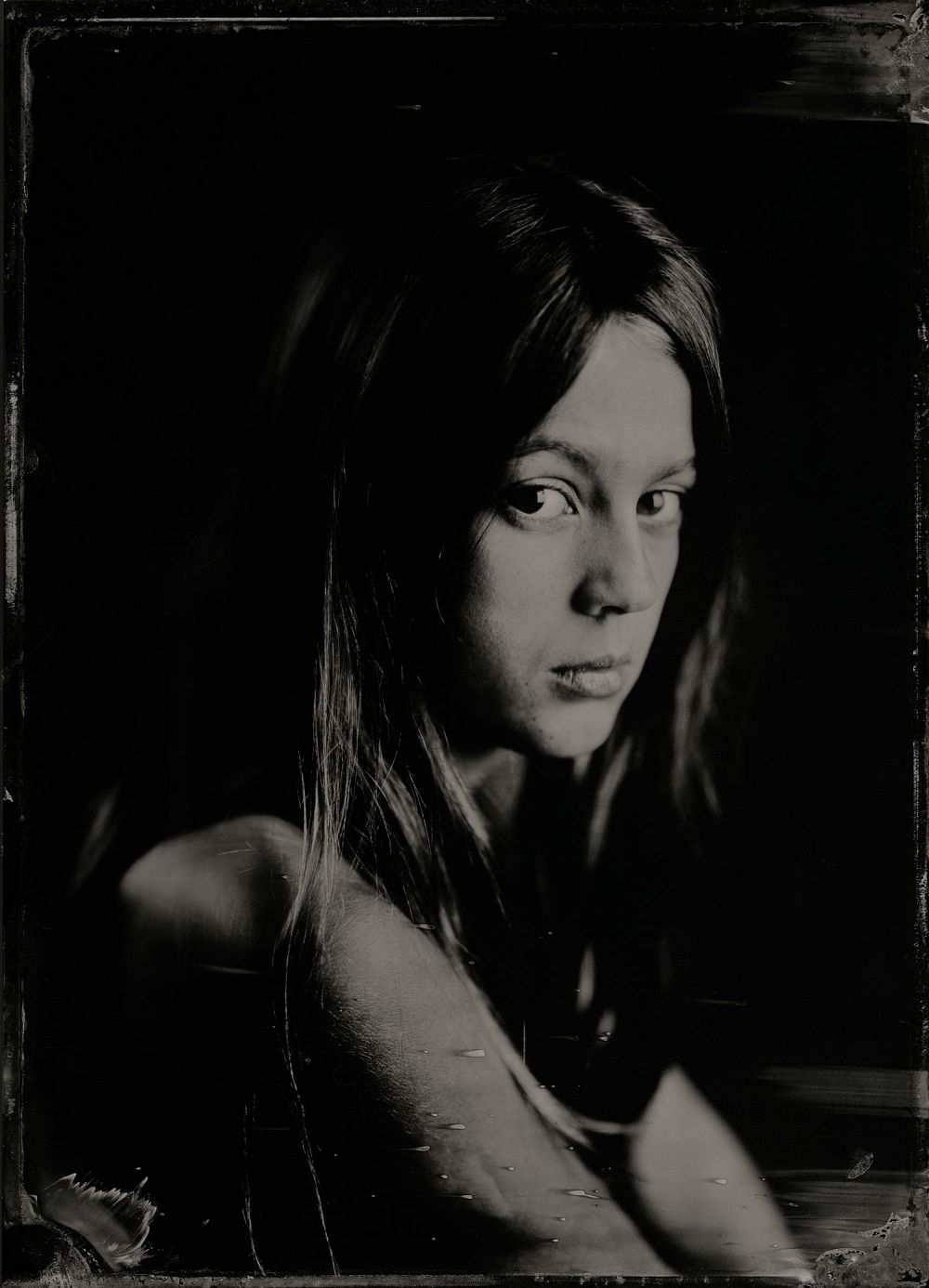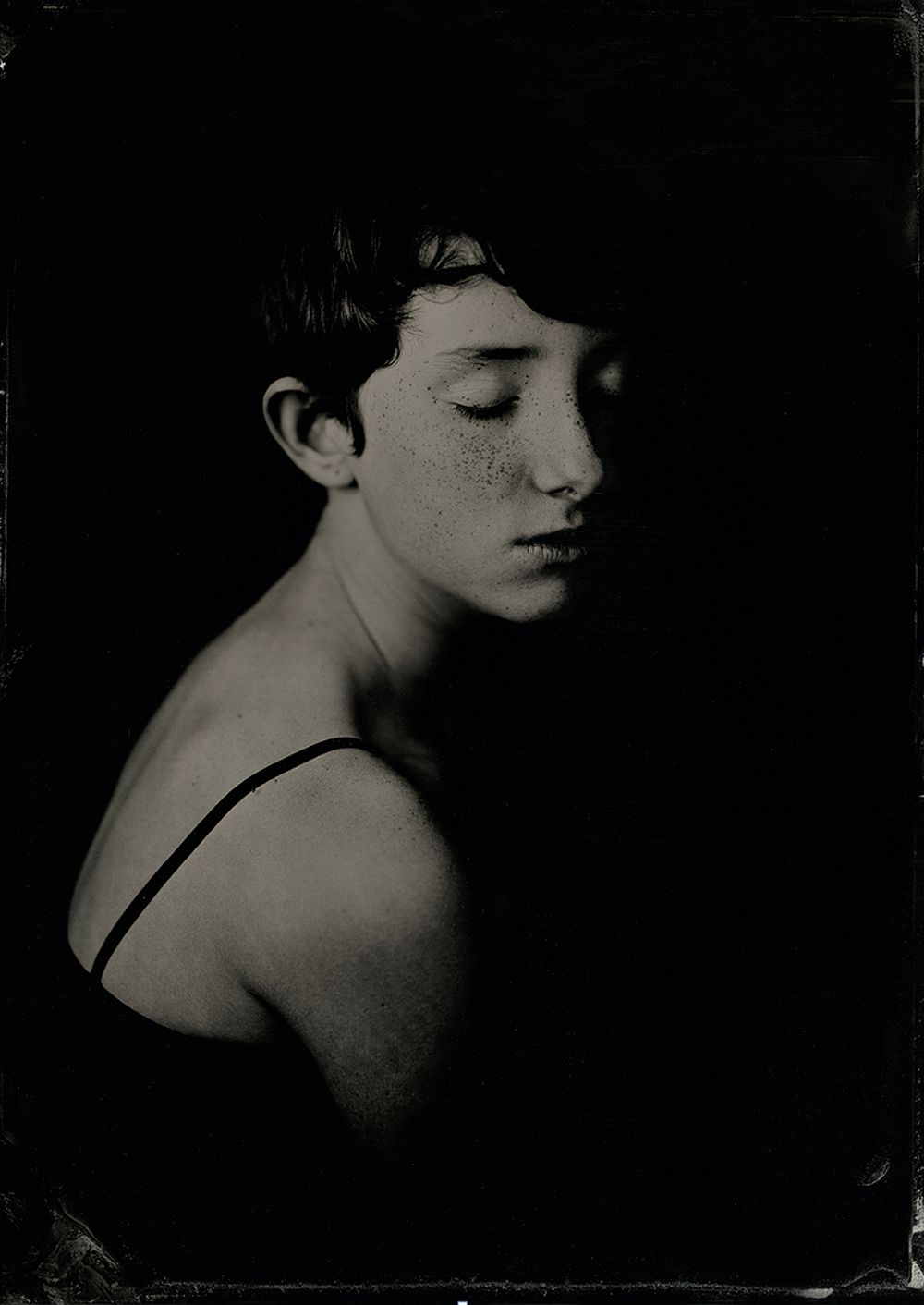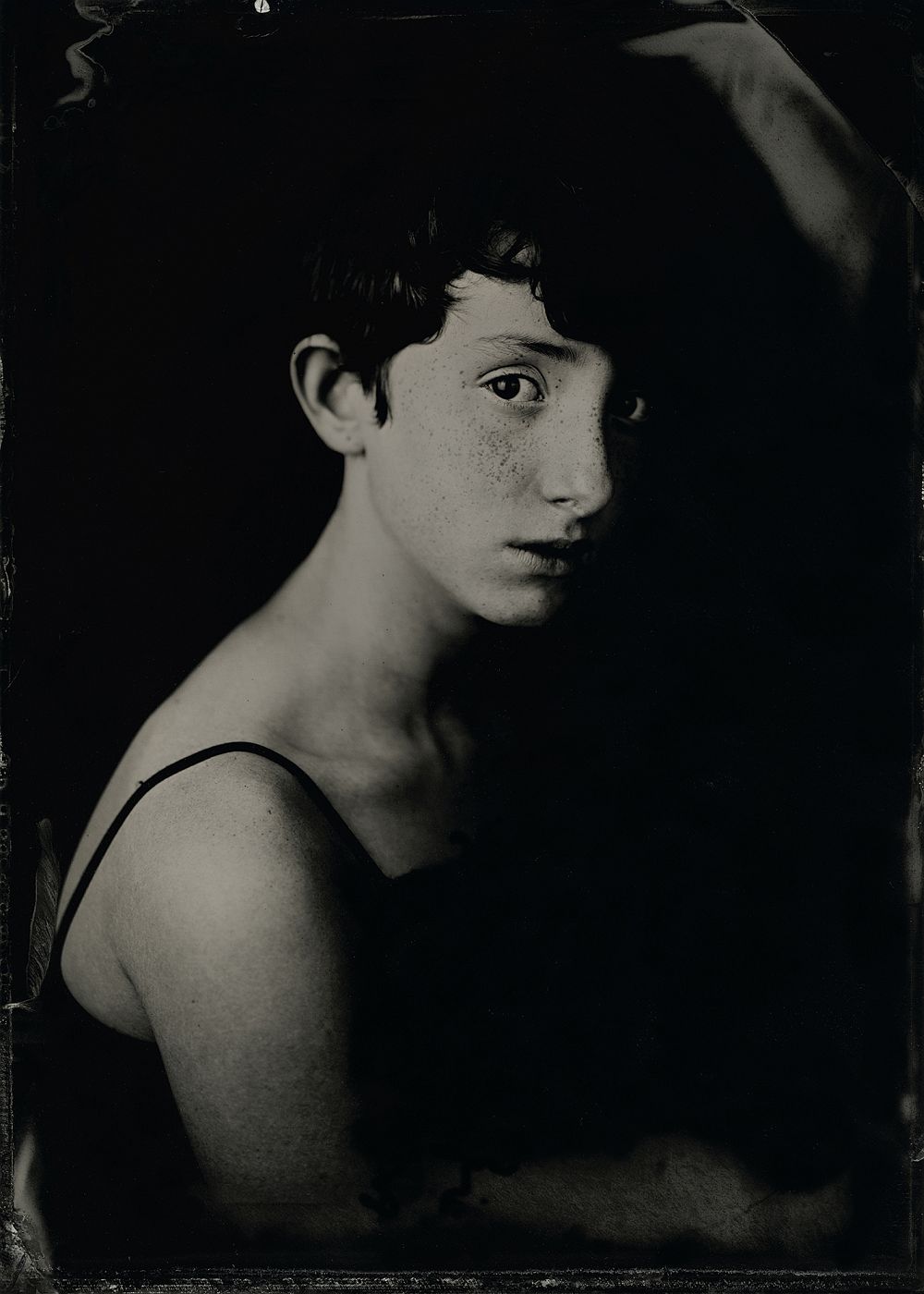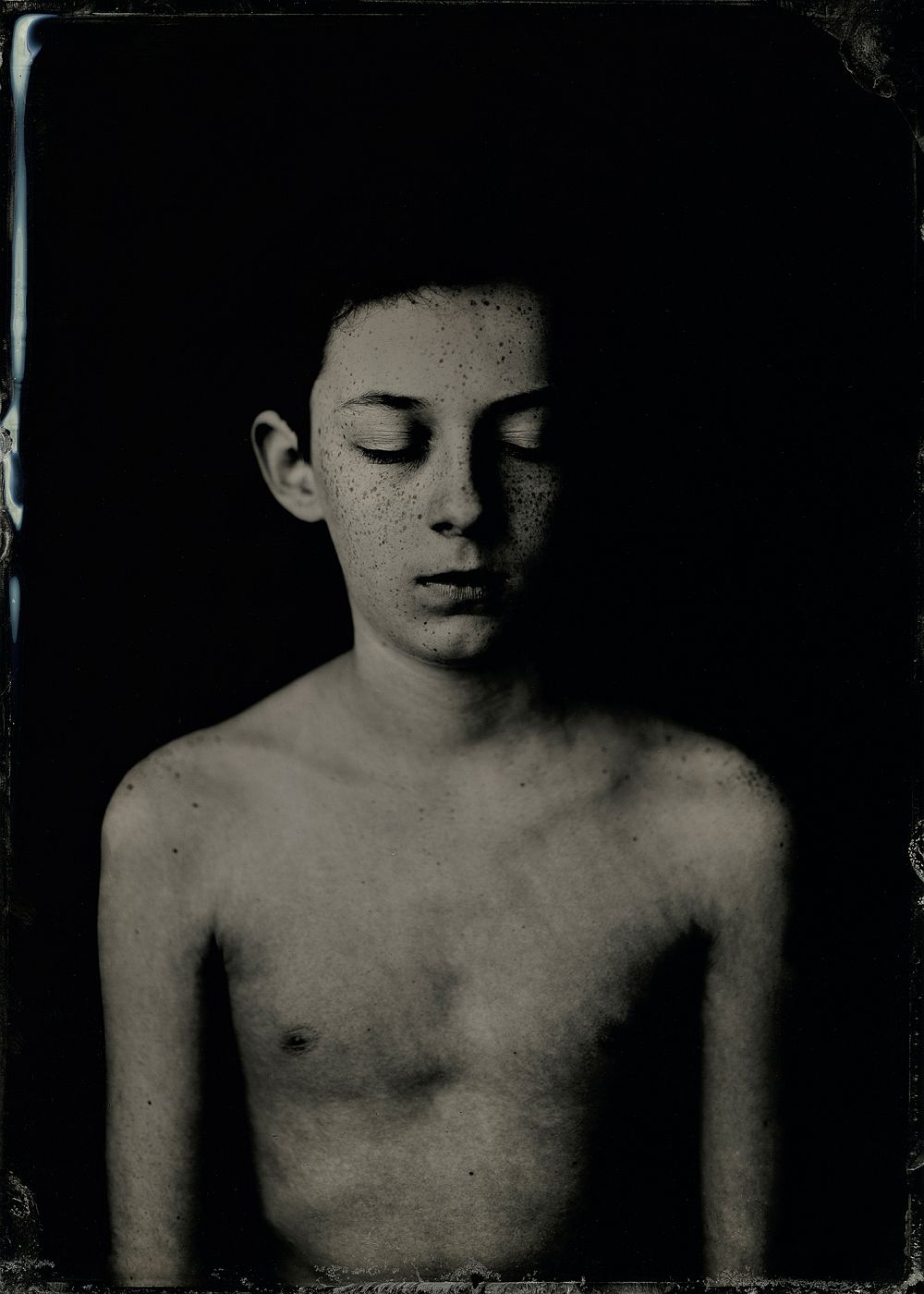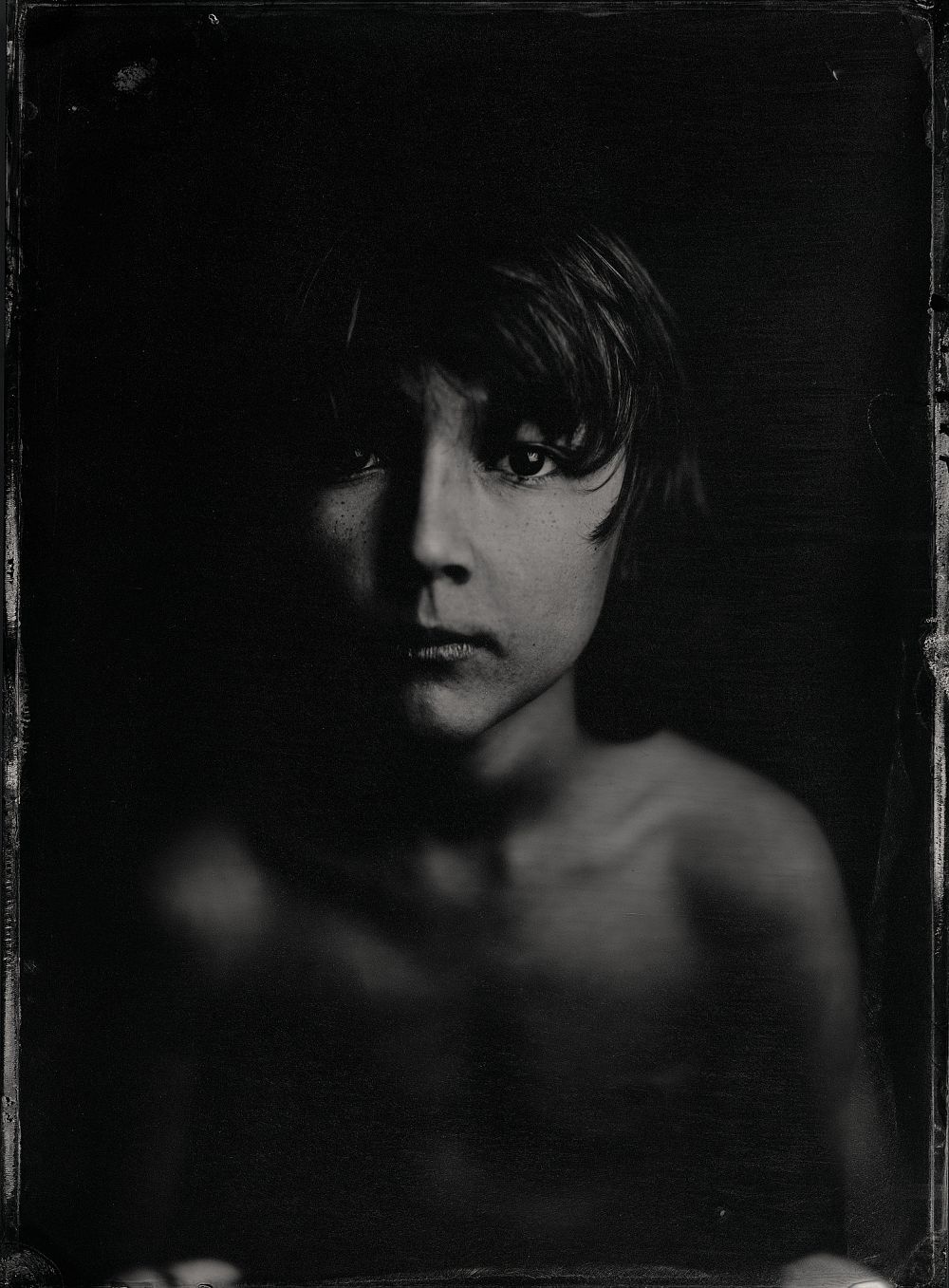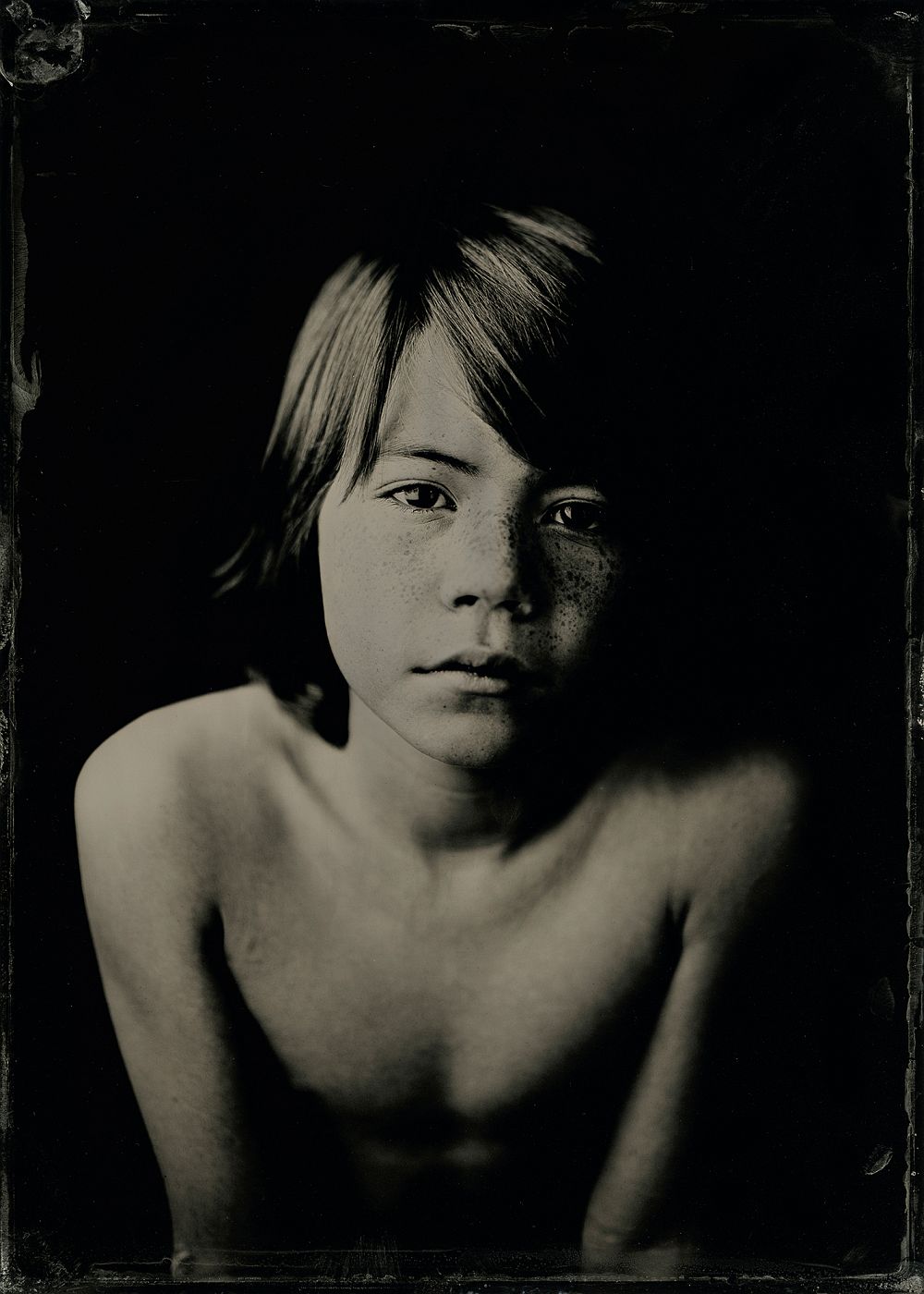Galina Kurlat was born in Moscow, Russia, and emigrated to the US in 1989. She graduated from Pratt Institute and currently lives and works in Brooklyn, NY.
Her work has been exhibited internationally and is in a number of public and private collections including the Museum of Fine Arts, Houston, TX and the Harry Ransom Center, Austin, TX. Recent exhibitions include: Photo Jinju in South Korea, Ogden Museum of Southern Art in New Orleans, the Oceanside Museum of Art in San Jose, the Houston Center for Photography and Studio Bizio in Edinburgh, Scotland.
In Kurlat’s work, she explores the intimate relationship between photographer and sitter through the wet collodion process. These tintypes are produced on thin sheets of metal, and each is a unique work of art.
If postmodernism has shown how little traditional aesthetic values mean for camera art, and digitial photography has turned photography into a language everyone thinks they speak, then Kurlat represents an interesting challenge to these trends. Using a process that was invented in 1853 and which had been defunct for almost a century, Kurlat’s tintype portraits position her amidst what the art historian Lyle Rexer termed “photography’s antiquarian avant-garde,” part of “the new wave in old processes.”
Each piece is a collaboration between the sitter and the artist. Most of her subjects are boys and girls between the ages of six and 13, capturing a moment of youth that is both ephemeral and transitional.
Because of the wet collodian process, there is a limited window during which the image can be created and captured on the metal sheet. The finished tintype emerges approximately 10 minutes later. Unlike digital pictures or paper prints that are eminently reproducible, each has a unique object quality, a “heft” and presence.
Writing about a completely different group of artists, the British art historian, Sarah Kent, suggested that artists today are frequently interested in process as a means towards understanding “ideas and issues that are… important. This does not mean that art has become merely a repository for existing beliefs; the illustration of ideas. On the contrary, artists are frequently unaware of the issues that concern them until they have emerged in physical form.”
Kurlat’s portraits are explorations of identity. Because she has focused on youths, they become investigations into the person that is, and the person they may become. They are replete with an inherent optimism, a sense of potential, that is perhaps tempered by a knowledge that time and circumstances are not always kind. And so they celebrate a fleeting moment, which is what photography has always been about – capturing and holding, commemorating and celebrating, while also asking…what next.
At the same time, this exhibition, which includes a total of 84 pieces, shows that Kurlat’s project transcends the individual. The installation features one wall of 60 portraits, another of nine, and a third of 15 larger scale (11 x 14 inches) plates. In a similar manner to August Sanders “Men of the 20th Century portrait series, or even Bernd & Hilla Becher’s Water Towers, these images, viewed in a grid, become archetypes, speaking not just about one boy or one girl, but also about humanity on a large scale.
Galina Kurlat
Shadow Play
November 1 – December 1, 2018
The Peter Hay Halpert Fine Art gallery
Suite 636 of the Aperture Building at 547 West 27th Street
https://www.phhfineart.com

